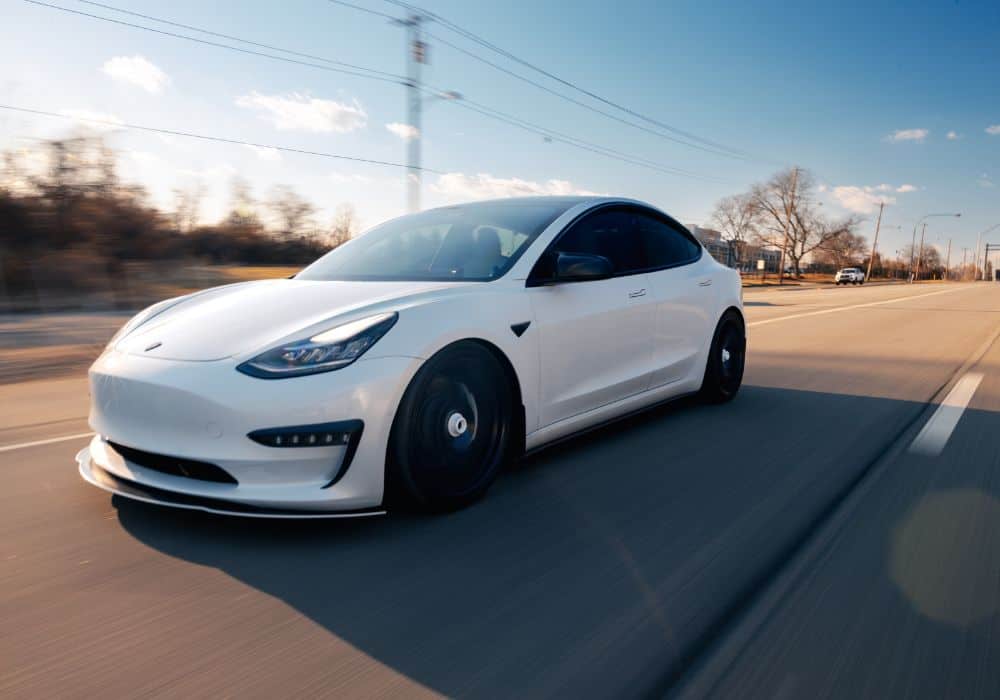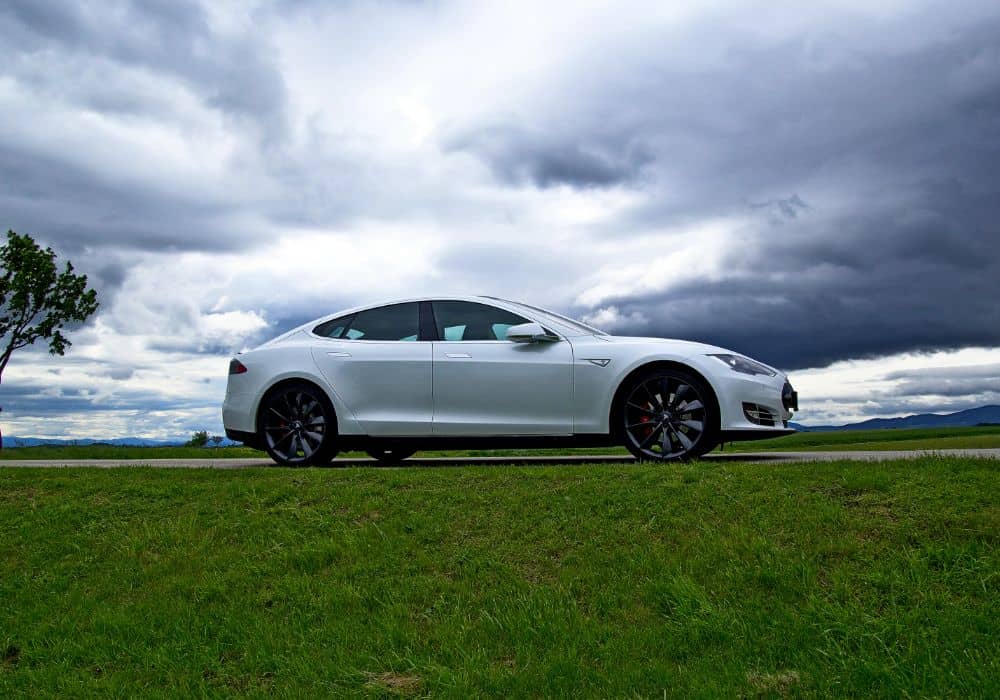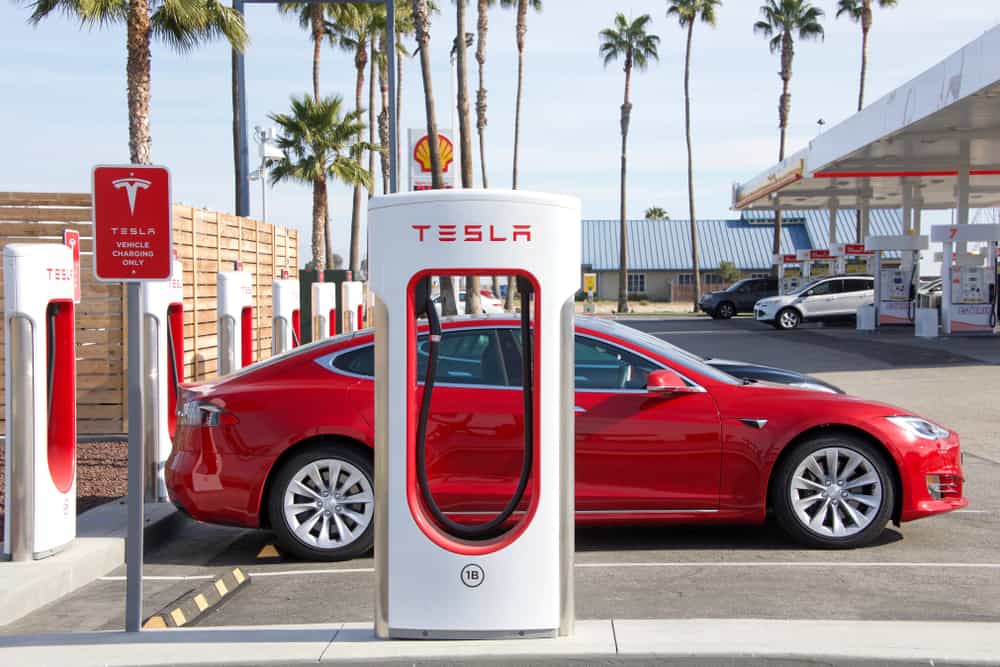While there are many charging points for Tesla cars, you may not be within range when you most need it. So what happens if your Tesla runs out of battery? That is one primary concern of Tesla or other electric car owners.
Typically, your Tesla will slow down and can no longer move at a normal speed when the battery is low or runs out. That does not mean you cannot move it at all; you can pilot the car to a spot on the side of the road and safely park it. However, that is all you can do at this point, but it gives you time to decide your next move.
This article explains what you can do when your Tesla battery runs low, how long a typical battery lasts, and the factors affecting the battery life. You can determine how to conserve the battery and avoid getting stranded far from a charging station.
Table of Contents
Factors Affecting a Tesla Battery
Check the following factors that affect how quickly a Tesla battery runs out and what to do about them.
1. Tesla Battery Strength
Tesla batteries are built to last many years. Elon Musk, the CEO of Tesla, says the batteries should last between 20 and 35 years based on Americans’ average yearly mileage range. That means the batteries can run for 300,000 to 500,000 miles.
These numbers depend on your usage and how you handle the automobile. For some, the battery will last long, while others may need to replace the battery within a shorter period. As with everything else, you must expect the battery to begin a decline after about 150,000 miles.
However, the battery will also last for many miles after this point, so you may not expect many changes to how it functions or get a new battery too quickly. The following are several factors that determine how long your Tesla battery lasts.
2. Weight
Believe it or not, a Tesla’s battery life can be reduced by the regular weight it carries per time. The heavier the weight your car carries, the weaker the battery becomes. The battery design makes it incapable of bearing too much weight.
That means the stress reduces the battery’s capacity over time. If the weight continues, your Tesla will stop performing as it should. Therefore, you must check how much weight you carry per time, as it determines the battery’s performance.
3. Driving Style

The better you handle your Tesla, the longer car and battery will last. Rough driving bears heavily on different components of the car. Carefully handling the car enables it to last longer than usual.
Therefore, you must check how rough or smooth your driving is. Since the battery handles all the moving functions of the car, it bears a lot of weight, which preserves or depletes its reserve. You may carry a charger to recharge the battery, but constant charging can prematurely damage it over time.
4. Car Model
The model is one of the primary factors affecting your Tesla battery charge and lifespan. Each model has a different battery type, which equates to a different battery composition. Some come with lead-acid batteries, some with nickel-cobalt batteries, and others with lithium-ion batteries.
The size of the battery and its capacity also depend on the model and type. The bigger the battery and the higher the capacity is, the longer it will last. The reason is that it can store more charge and efficiently use the available power.
You will find lead-acid batteries in heavy-duty vehicles. The primary reason is that they are not as sensitive as the other battery types. Therefore, they can withstand a lot more impact without damage. However, they have low travel ranges and short lifespans.
On the flip side, lithium-ion batteries are the most efficient type and last a long time. They have a large charge storage capacity while encouraging efficient usage. For example, the latest lithium-ion battery in a Tesla Model S can hold a charge to last about 752 miles before the next charge.
This is one of the best ranges of any electric car’s battery currently on the market. That also means you will not quickly run out of battery charge when fully charged if you have this model.
5. Charging Point
While you may be tempted to charge your Tesla battery until it is full, it may affect its efficiency. The same is true if you allow it to discharge fully before charging. Over time, fully charging or discharging the battery affects how well it runs.
Tesla stipulates that the car charge or discharge range is between 20 and 90%. In other words, do not let it discharge below 20% and keep it charging until 90%. Do not let it charge up to 100% for the best results. Additionally, do not leave it in a low state of charge for extended periods. Otherwise, it may affect the battery’s capacity.
6. Maintenance

To preserve the battery life and ensure it does not prematurely run out while driving, you must care for it. Take the car for regular maintenance checks to ensure the battery and other components are in excellent functioning condition.
On your part, you must maintain the stipulated charge time and routine to preserve its life. Exceeding the time or keeping it below charge expends its energy and encourages your Tesla to run out of battery before time. If unsure, let a trained professional run maintenance on the car.
7. Acceleration and Braking Frequency
How often you accelerate or brake affects the battery juice. This does not only apply to electric cars; every car undergoes premature wear if you frequently accelerate and for extended periods. The vehicle uses its battery juice too quickly if you often accelerate for long periods.
The same applies if you brake frequently or take short trips. The battery experiences stress and pressure if you brake too often. And it discharges fast when making short trips because you will have to start it often, draining the battery.
8. Regular Route
Lithium-ion batteries are highly sensitive, and since newer Tesla models come with this battery type, they may quickly lose their charge. This is especially true if you drive uphill too often and for extended periods.
The same applies to driving on rough terrains. You may have to rev the engine frequently, causing a drain in the battery. It can be dangerous if your Tesla runs out of battery while on a slope. The car may roll backward and cause injury in the process.
What to Do When Your Tesla Battery Runs Low

There are several solutions to try when your Tesla battery runs low or out. You can call a tow truck, use a mobile charger, or get roadside assistance.
1. Use a Mobile Charger
This is one of the most recent methods of charging a Tesla or other electric vehicles. A tow truck can bring a fast charger that will quickly produce a charge to get your Tesla up and running again. You do not have to go out of your route to charge the car.
Therefore, if you are stranded, far from the nearest charging point, you can see if the available tow trucks offer mobile charging options. This method may be your best bet to leave that spot as soon as possible.
2. Call a Tow Truck
If a mobile charger is not an option, consider using a tow truck to reach the nearest charging point. Note that towing an electric vehicle like a Tesla requires adequate planning. You cannot tow them in the same way you would traditional gas-powered vehicles.
The tow company must have the training and equipment to move the car without damaging any part. The company must also send tow truck drivers with experience in moving the car without damage to the underside; electric cars are lower than conventional ones, so a flatbed truck is ideal.
3. Roadside Service
When all else fails, consider using a roadside service. One of the perks of this method is that it is efficient and effective, especially for electric cars. However, it may not be readily available in every area, and it may take some time to reach you.
Consider Jump-Starting Your Tesla
There are typically two batteries in a Tesla car. One is a big one that powers the engine and other key components. The second battery is a smaller one that powers the wipers, screens, radios, and other similar parts.
Test the smaller battery to check the charge. If enough charge is stored, it may power the bigger one to get it up and running again. Therefore, try jump-starting it to see if it works. Do not force it; take the car to a service point if the process fails or you will need a replacement battery.
Conclusion
What happens if your Tesla runs out of battery charge? The car will slow down but will not completely stop. The reason is that the battery has some reserve that can power it for a few extra miles. However, the battery indicator will warn you when it enters the reserve.
Fortunately, there are methods to recharge it, even if you are far from a charging point. Use a mobile charger or roadside assistance service for the quickest results. Ensure you do not overcharge it and keep it from discharging below a specific point.
